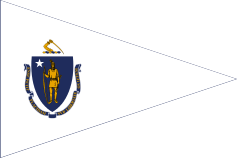Governor of Massachusetts
| Governor of the Commonwealth of Massachusetts | |
|---|---|
|
| |
|
| |
| Style | His Excellency |
| Term length | Four years, no term limit |
| Inaugural holder | John Hancock |
| Formation | October 25, 1780 |
| Salary | $139,832 (2013)[1] |
| Website | Office of the Governor |
The Governor of Massachusetts is the head of the executive branch of Massachusetts' state government and serves as commander-in-chief of the state's military forces. The current governor is Charlie Baker.
Constitutional role
Part of the Second, Chapter II, Section I, Article I, of the Massachusetts Constitution reads,
There shall be a supreme executive magistrate, who shall be styled, The Governor of the Commonwealth of Massachusetts; and whose title shall be – His Excellency.
The Governor of Massachusetts is the chief executive of the Commonwealth, and is supported by a number of subordinate officers. He, like most other state officers, senators, and representatives, was originally elected annually. In 1918 this was changed to a two-year term, and since 1966 the office of governor has carried a four-year term. The Governor of Massachusetts does not receive a mansion, other official residence, or housing allowance. Instead, he resides in his own private residence. The title "His Excellency" is a throwback to the royally appointed governors of the Province of Massachusetts Bay. The first governor to use the title was Richard Coote, 1st Earl of Bellomont, in 1699; since he was an Earl, it was thought proper to call him "Your Excellency." The title was retained until 1742, when an order from King George II forbade its further use. However, the framers of the state constitution revived it because they found it fitting to dignify the governor with this title.[2]
The governor also serves as commander-in-chief of the Commonwealth's armed forces.
Succession
According to the state constitution, whenever the chair of the governor is vacant, the lieutenant governor shall take over as acting governor. The first time this came into use was five years after the constitution's adoption in 1785, when Governor John Hancock resigned the post, leaving Lieutenant Governor Thomas Cushing as acting governor. Most recently, Jane Swift became acting governor upon the resignation of Paul Cellucci. Under this system, the lieutenant governor retains his or her position and title as "lieutenant governor" and becomes acting governor, not governor.
The lieutenant governor, when acting as governor, is referred to as "the lieutenant governor, acting governor" in official documents.[3]
The Massachusetts Constitution does not use the term "acting governor". The Massachusetts courts have found that the full authority of the office of the governor devolves to the lieutenant governor upon vacancy in the office of governor, i.e., there is no circumstance short of death, resignation, or impeachment that would relieve the acting governor from the full gubernatorial responsibilities.
When the constitution was first adopted, the Governor's Council was charged with acting as governor in the event that both the governorship and lieutenant governorship were vacant. This occurred in 1799 when Governor Increase Sumner died in office on June 7, 1799, leaving Lieutenant Governor Moses Gill as acting governor. Acting Governor Gill never received a lieutenant and died on May 20, 1800, between that year's election and the inauguration of Governor-elect Caleb Strong. The Governor's Council served as the executive for ten days; the council's chair, Thomas Dawes was at no point named governor or acting governor.
Article LV of the Constitution, enacted in 1918, created a new line of succession:
- Governor (Charlie Baker)
- Lieutenant governor (Karyn Polito)
- Secretary of the Commonwealth (Bill Galvin)
- Attorney general (Maura Healey)
- Treasurer and receiver-general (Deb Goldberg)
- State auditor (Suzanne Bump)
When the governor dies, resigns, or is removed from office, the office of governor remains vacant for the rest of the 4-year term. The lieutenant governor does not succeed but only discharges powers and duties as acting governor. However, if a vacancy in the office of governor continues for six months, and the six months expire more than five months before the next regular biennial state election midway through the governor's term, a special election is held at that time to fill the vacancy for the balance of the unexpired four-year term.[4]
Cabinet
The governor has a 10-person cabinet, each of whom oversees a portion of the government under direct administration (as opposed to independent executive agencies). See Government of Massachusetts for a complete listing.
Traditions
The front doors of the state house are only opened when a governor leaves office or a head of state comes to visit the State House, or for the return of flags from Massachusetts regiments at the end of wars. The tradition of the ceremonial door originated when departing Governor Benjamin Butler kicked open the front door and walked out by himself in 1884.
Incoming governors usually choose at least one past governor's portrait to hang in their office.
Immediately before being sworn into office, the governor-elect receives four symbols from the departing governor: the ceremonial pewter "Key" for the governor's office door, the Butler Bible, the "Gavel", and a two-volume set of the Massachusetts General Statutes with a personal note from the departing governor to his/her successor added to the back of the text. The governor-elect is then escorted by the sergeant-at-arms to the House Chamber and sworn in by the senate president before a joint session of the House and Senate.[5]
Lone walk
Upon completion of their term, the departing governor takes a "lone walk" down the Grand Staircase, through the House of Flags, into Doric Hall, out the central doors and down the steps of the Massachusetts State House. The governor then crosses the street into Boston Common, thereby symbolically rejoining the Commonwealth as a private citizen. Benjamin Butler started the tradition in 1884.[6] Some walks have been modified with some past governors having their wives, friends or staff accompany them.[7] A 19-gun salute is offered during the walk, and frequently the steps are lined by the outgoing governor's friends and supporters.[8]
In January 1991, outgoing Lieutenant Governor Evelyn Murphy, the first woman elected to statewide office in Massachusetts, walked down the stairs before Governor Michael Dukakis. In a break from tradition, the January 2007 inauguration of Governor Deval Patrick took place the day after outgoing Governor Mitt Romney took the lone walk down the front steps.[8]
Governor's residence
Despite several proposals for establishing an official residence for the Governor of Massachusetts, including the Endicott Estate which was once acquired for the purpose, the Commonwealth of Massachusetts does not have a governor's mansion.
In 1955, Governor Foster Furcolo turned down a proposal to establish the Shirley-Eustis House in Roxbury, built by royal Governor William Shirley, as the official residence.[9]
At one time, Governor John A. Volpe accepted the donation of the Endicott Estate in Dedham from the heirs of Henry Bradford Endicott. He intended to renovate the 19th-century mansion into a splendid governor's residence.[10] After Volpe resigned to become secretary of transportation in the Nixon Administration, the plan was aborted by his successor in consideration of budgetary constraints and because the location was considered too far from the seat of power, the State House in Boston.
Prior to their early-20th century demolitions, the Province House and the Hancock Manor[10] were also proposed as official residences.
Since the governor has no official residence, the expression "corner office," rather than "governor's mansion," is commonly used in the press as a metonym for the office of governor.
List of governors
Since 1780, 65 people have been elected governor, six to non-consecutive terms, and seven lieutenant governors have acted as governor without subsequently being elected governor. Prior to 1918 constitutional reforms, both the governor's office and that of lieutenant governor were vacant on one occasion, when the state was governed by the Governor's Council.
Colonial Massachusetts
The colonial history of Massachusetts begins with the founding first of the Plymouth Colony in 1620, and then the Massachusetts Bay Colony in 1628. The Dominion of New England combined these and other New England colonies into a single unit in 1686, but collapsed in 1689. In 1692 the Province of Massachusetts Bay was established, merging Plymouth and Massachusetts Bay, which then included the territory of present-day Maine.
Colonial governors of Plymouth and the Massachusetts Bay Colony were elected annually by a limited subset of the male population (known as freemen), while Dominion officials and those of the 1692 province were appointed by the British crown. In 1774 General Thomas Gage became the last royally appointed governor of Massachusetts. He was recalled to England after the Battle of Bunker Hill in June 1775, by which time the Massachusetts Provincial Congress exercised de facto control of Massachusetts territory outside British-occupied Boston. Between 1775 and the establishment of the Massachusetts State Constitution in 1780 the state was governed by the provincial congress and an executive council.
Commonwealth of Massachusetts: 1780–present
In the table below, acting governors are denoted in the leftmost column by the letter "A", and are not counted as actual governors. The longest-serving governor was Michael Dukakis, who served twelve years in office, although they were not all consecutive. The longest period of uninterrupted service by any governor was nine years, by Levi Lincoln Jr. The shortest service period by an elected governor was one year, achieved by several 19th century governors. Increase Sumner, elected by a landslide to a third consecutive term in 1799, was on his deathbed and died not long after taking the oath of office; this represents the shortest part of an individual term served by a governor. Sumner was one of four governors to die in office; seven governors resigned, most of them to assume another office.
| Political party | Number of governors |
|---|---|
| Democratic | 19 |
| Democratic-Republican | 6 |
| Federalist | 3 |
| Know Nothing | 1 |
| National Republican | 1 |
| No party affiliation | 6 |
| Republican | 31 |
| Whig | 7 |
| # | Governor | Party | Years | Lt. governor | Electoral history |
|---|---|---|---|---|---|
| 1 | 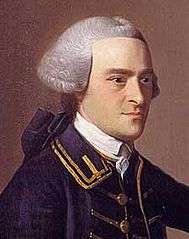 John Hancock John Hancock |
None | October 25, 1780 – February 17, 1785 |
Thomas Cushing (1780–1788) |
Resigned due to claimed illness (recurring gout). |
| A[11] |  Thomas Cushing Thomas Cushing |
February 17, 1785 – May 27, 1785 |
Acted as governor for the remainder of Hancock's term; Lost election in his own right | ||
| 2 |  James Bowdoin James Bowdoin |
May 27, 1785 – May 30, 1787 |
Lost re-election | ||
| 3 |  John Hancock John Hancock |
May 30, 1787 – October 8, 1793 |
Died | ||
| Benjamin Lincoln (1788–1789) | |||||
| Samuel Adams (1789–1794) | |||||
| 4 |  Samuel Adams Samuel Adams |
October 8, 1793 – June 2, 1797 |
Acted as governor for the remainder of Hancock's term; Elected and re-elected in his own right until retirement | ||
| Moses Gill (1794–1800) | |||||
| 5 |  Increase Sumner Increase Sumner |
Federalist | June 2, 1797 – June 7, 1799 |
Died | |
| A[11] |  Moses Gill Moses Gill |
None | June 7, 1799 – May 20, 1800 |
Acted as governor for most of the remainder of Sumner's term; Died ten days before its end | |
| A[11] |  Governor's Council Governor's Council |
May 20, 1800 – May 30, 1800 |
None | The council was headed by Thomas Dawes; this is the only time both the governorship and the lieutenant governorship were vacant. | |
| 6 |  Caleb Strong Caleb Strong |
Federalist | May 30, 1800 – May 29, 1807 |
Samuel Phillips Jr. (1801–1802) |
Lost re-election |
| Edward Robbins (1802–1806) | |||||
| 7 |  James Sullivan James Sullivan |
Democratic- Republican |
May 29, 1807 – December 10, 1808 |
Levi Lincoln Sr. | Died |
| A[11] |  Levi Lincoln Sr. Levi Lincoln Sr. |
Democratic- Republican |
December 10, 1808 – May 1, 1809 |
Acted as governor for the remainder of Sullivan's term; Lost election in his own right | |
| 8 |  Christopher Gore Christopher Gore |
Federalist | May 1, 1809 – June 10, 1810 |
David Cobb | Lost re-election |
| 9 |  Elbridge Gerry Elbridge Gerry |
Democratic- Republican |
June 10, 1810 – March 4, 1812 |
William Gray | Lost re-election |
| 10 |  Caleb Strong Caleb Strong |
Federalist | March 4, 1812 – May 30, 1816 |
William Phillips Jr. | Retired |
| 11 |  John Brooks John Brooks |
Federalist | May 30, 1816 – May 31, 1823 |
Retired | |
| 12 |  William Eustis William Eustis |
Democratic- Republican |
May 31, 1823 – February 6, 1825 |
Levi Lincoln Jr. (1823–1824) |
Died |
| Marcus Morton (1824–1825) | |||||
| A[11] |  Marcus Morton Marcus Morton |
Democratic- Republican |
February 6, 1825 – May 26, 1825 |
Acted as governor for the remainder of Eustis's term; Retired | |
| 13 |  Levi Lincoln Jr. Levi Lincoln Jr. |
National Republican |
May 26, 1825 – January 9, 1834 |
Thomas L. Winthrop (1826–1833) |
Retired |
| 14 | .jpg) John Davis John Davis |
Whig | January 9, 1834 – March 1, 1835 |
Samuel Turell Armstrong | Resigned to become US Senator |
| A[11] | 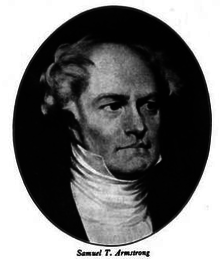 Samuel Turell Armstrong Samuel Turell Armstrong |
Whig | March 1, 1835 – January 13, 1836 |
Acted as governor for the remainder of Davis's term; Lost nomination; lost election as independent | |
| 15 |  Edward Everett Edward Everett |
Whig | January 13, 1836 – January 18, 1840 |
George Hull | Lost re-election |
| 16 |  Marcus Morton Marcus Morton |
Democratic | January 18, 1840 – January 7, 1841 |
Lost re-election | |
| 17 | .jpg) John Davis John Davis |
Whig | January 7, 1841 – January 17, 1843 |
Lost re-election | |
| 18 |  Marcus Morton Marcus Morton |
Democratic | January 17, 1843 – January 9, 1844 |
Henry H. Childs | Lost re-election |
| 19 |  George N. Briggs George N. Briggs |
Whig | January 9, 1844 – January 11, 1851 |
John Reed Jr. | Lost re-election |
| 20 |  George S. Boutwell George S. Boutwell |
Democratic | January 11, 1851 – January 14, 1853 |
Henry W. Cushman | Retired |
| 21 |  John H. Clifford John H. Clifford |
Whig | January 14, 1853 – January 12, 1854 |
Elisha Huntington | Retired |
| 22 |  Emory Washburn Emory Washburn |
Whig | January 12, 1854 – January 4, 1855 |
William C. Plunkett | Lost re-election |
| 23 | 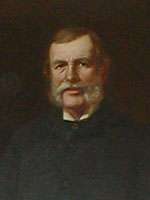 Henry Gardner Henry Gardner |
Know-Nothing | January 4, 1855 – January 7, 1858 |
Simon Brown (1855–1856) |
Lost re-election |
| Henry W. Benchley (1856–1858) | |||||
| 24 |  Nathaniel Prentice Banks Nathaniel Prentice Banks |
Republican | January 7, 1858 – January 3, 1861 |
Eliphalet Trask | Retired to run for president |
| 25 | _-_Andrew_-_edit.jpg) John Albion Andrew John Albion Andrew |
Republican | January 3, 1861 – January 4, 1866 |
John Z. Goodrich (1861) |
Retired |
| John Nesmith (1862) | |||||
| Joel Hayden (1863–1866) | |||||
| 26 |  Alexander H. Bullock Alexander H. Bullock |
Republican | January 4, 1866 – January 7, 1869 |
William Claflin | Retired |
| 27 |  William Claflin William Claflin |
Republican | January 7, 1869 – January 4, 1872 |
Joseph Tucker (1869–1873) |
Retired |
| 28 |  William B. Washburn William B. Washburn |
Republican | January 4, 1872 – April 29, 1874 |
Resigned to become US Senator | |
| Thomas Talbot (1873–1875) | |||||
| A[11] |  Thomas Talbot Thomas Talbot |
Republican | April 29, 1874 – January 7, 1875 |
Acted as governor for the remainder of Washburn's term; Lost election in his own right | |
| 29 | 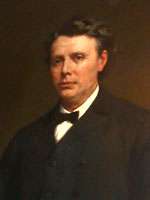 William Gaston William Gaston |
Democratic | January 7, 1875 – January 6, 1876 |
Horatio G. Knight | Lost re-election |
| 30 |  Alexander H. Rice Alexander H. Rice |
Republican | January 6, 1876 – January 2, 1879 |
Retired | |
| 31 |  Thomas Talbot Thomas Talbot |
Republican | January 2, 1879 – January 8, 1880 |
John Davis Long | Retired |
| 32 |  John Davis Long John Davis Long |
Republican | January 8, 1880 – January 4, 1883 |
Byron Weston | Retired |
| 33 |  Benjamin F. Butler Benjamin F. Butler |
Democratic | January 4, 1883 – January 3, 1884 |
Oliver Ames | Lost re-election |
| 34 | 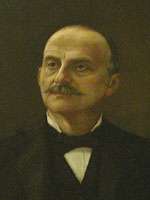 George D. Robinson George D. Robinson |
Republican | January 3, 1884 – January 6, 1887 |
Retired | |
| 35 |  Oliver Ames Oliver Ames |
Republican | January 6, 1887 – January 7, 1890 |
John Q. A. Brackett | Retired |
| 36 |  John Q. A. Brackett John Q. A. Brackett |
Republican | January 7, 1890 – January 8, 1891 |
William H. Haile (1890–1893) |
Lost re-election |
| 37 |  William E. Russell William E. Russell |
Democratic | January 8, 1891 – January 4, 1894 |
Retired | |
| Roger Wolcott (1893–1897) | |||||
| 38 |  Frederic T. Greenhalge Frederic T. Greenhalge |
Republican | January 4, 1894 – March 5, 1896 |
Died | |
| 39 |  Roger Wolcott Roger Wolcott |
Republican | March 5, 1896 – January 4, 1900 |
Acted as governor for the remainder of Greenhalge's term; Elected and re-elected in own right until retirement | |
| Winthrop Murray Crane (1897–1900) | |||||
| 40 |  Winthrop Murray Crane Winthrop Murray Crane |
Republican | January 4, 1900 – January 8, 1903 |
John L. Bates | Retired |
| 41 | 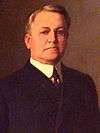 John L. Bates John L. Bates |
Republican | January 8, 1903 – January 5, 1905 |
Curtis Guild Jr. | Retired |
| 42 | 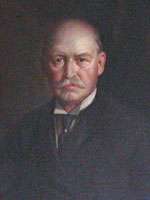 William L. Douglas William L. Douglas |
Democratic | January 5, 1905 – January 4, 1906 |
Retired | |
| 43 |  Curtis Guild Jr. Curtis Guild Jr. |
Republican | January 4, 1906 – January 7, 1909 |
Eben Sumner Draper | Retired |
| 44 | 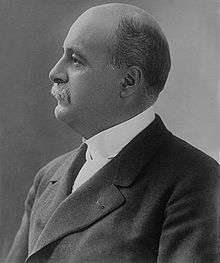 Eben Sumner Draper Eben Sumner Draper |
Republican | January 7, 1909 – January 5, 1911 |
Louis A. Frothingham | Lost re-election |
| 45 | 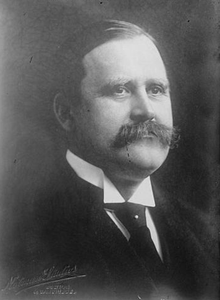 Eugene Noble Foss Eugene Noble Foss |
Democratic | January 5, 1911 – January 8, 1914 |
Louis A. Frothingham (1911–1912) |
Did not stand for renomination as Democrat; defeated as independent in general election |
| Robert Luce (1912–1913) | |||||
| David I. Walsh (1913–1914) | |||||
| 46 |  David I. Walsh David I. Walsh |
Democratic | January 8, 1914 – January 6, 1916 |
Edward P. Barry (1914–1915) |
Lost re-election |
| Grafton D. Cushing (1915–1916) | |||||
| 47 |  Samuel W. McCall Samuel W. McCall |
Republican | January 6, 1916 – January 2, 1919 |
Calvin Coolidge | Retired |
| 48 |  Calvin Coolidge Calvin Coolidge |
Republican | January 2, 1919 – January 6, 1921 |
Channing H. Cox | Retired to run successfully for U.S. Vice President |
| 49 |  Channing H. Cox Channing H. Cox |
Republican | January 6, 1921 – January 8, 1925 |
Alvan T. Fuller | Elected in 1920 (first two-year term); Re-elected in 1922; Retired |
| 50 |  Alvan T. Fuller Alvan T. Fuller |
Republican | January 8, 1925 – January 3, 1929 |
Frank G. Allen | Retired |
| 51 |  Frank G. Allen Frank G. Allen |
Republican | January 3, 1929 – January 8, 1931 |
William S. Youngman | Lost re-election |
| 52 |  Joseph B. Ely Joseph B. Ely |
Democratic | January 8, 1931 – January 3, 1935 |
William S. Youngman (1929–1933) |
Retired |
| Gaspar G. Bacon (1933–1935) | |||||
| 53 | 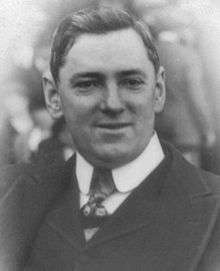 James Michael Curley James Michael Curley |
Democratic | January 3, 1935 – January 7, 1937 |
Joseph L. Hurley | Retired to run unsuccessfully for U.S. Senate |
| 54 |  Charles F. Hurley Charles F. Hurley |
Democratic | January 7, 1937 – January 5, 1939 |
Francis E. Kelly | Lost renomination |
| 55 |  Leverett Saltonstall Leverett Saltonstall |
Republican | January 5, 1939 – January 3, 1945 |
Horace T. Cahill | Retired to run successfully for U.S. Senate |
| 56 |  Maurice J. Tobin Maurice J. Tobin |
Democratic | January 3, 1945 – January 2, 1947 |
Robert F. Bradford | Lost re-election |
| 57 | .jpg) Robert F. Bradford Robert F. Bradford |
Republican | January 2, 1947 – January 6, 1949 |
Arthur W. Coolidge | Elected in 1946; Lost re-election |
| 58 |  Paul A. Dever Paul A. Dever |
Democratic | January 6, 1949 – January 8, 1953 |
Charles F. Sullivan | Elected in 1948; Re-elected in 1950; Lost re-election |
| 59 | .jpg) Christian A. Herter Christian A. Herter |
Republican | January 8, 1953 – January 3, 1957 |
Sumner G. Whittier | Elected in 1952; Re-elected in 1954; Retired |
| 60 | 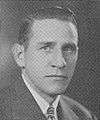 Foster Furcolo Foster Furcolo |
Democratic | January 3, 1957 – January 5, 1961 |
Robert F. Murphy (1957–1960) |
Elected in 1956; Re-elected in 1958; Retired to run unsuccessfully for U.S. Senate |
| 61 | 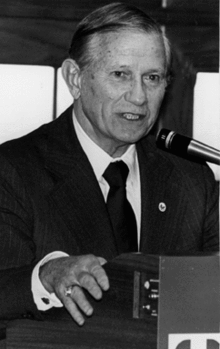 John A. Volpe John A. Volpe |
Republican | January 5, 1961 – January 3, 1963 |
Edward F. McLaughlin Jr. | Elected in 1960; Lost re-election |
| 62 |  Endicott Peabody Endicott Peabody |
Democratic | January 3, 1963 – January 7, 1965 |
Francis X. Bellotti | Elected in 1962; Lost renomination |
| 63 |  John A. Volpe John A. Volpe |
Republican | January 7, 1965 – January 22, 1969 |
Elliot Richardson (1965–1967) |
Elected in 1964; Re-elected in 1966 (first four-year term); Resigned to become U.S. Secretary of Transportation |
| Francis W. Sargent (1967–1969) | |||||
| 64 | 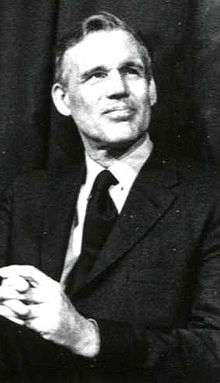 Francis W. Sargent Francis W. Sargent |
Republican | January 22, 1969 – January 2, 1975 |
Acted as governor for the remainder of Volpe's term; elected in own right in 1970; Lost re-election | |
| Donald R. Dwight (1971–1975) | |||||
| 65 | .jpg) Michael Dukakis Michael Dukakis |
Democratic | January 2, 1975 – January 4, 1979 |
Thomas P. O'Neill III | Elected in 1974; Lost renomination |
| 66 |  Edward J. King Edward J. King |
Democratic | January 4, 1979 – January 6, 1983 |
Elected in 1978; Lost renomination | |
| 67 |  Michael Dukakis Michael Dukakis |
Democratic | January 6, 1983 – January 3, 1991 |
John Kerry (1983–1985) |
Elected in 1982; Elected in 1986; Retired |
| Vacant (1985–1987) | |||||
| Evelyn Murphy (1987–1991) | |||||
| 68 | 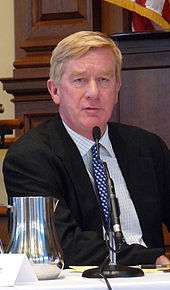 William F. Weld William F. Weld |
Republican | January 3, 1991 – July 29, 1997 |
Paul Cellucci (1991–1999) |
Elected in 1990; Re-elected in 1994; Resigned when nominated U.S. Ambassador to Mexico, but was not confirmed to the office. |
| A[11] 69 |
 Paul Cellucci Paul Cellucci |
Republican | July 29, 1997 – April 10, 2001 |
Acted as governor for the remainder of Weld's term; elected in own right in 1998; Resigned to become U.S. Ambassador to Canada | |
| Jane Swift | |||||
| A[11] |  Jane Swift Jane Swift |
Republican | April 10, 2001 – January 2, 2003 |
Acted as governor for the remainder of Cellucci's term; Retired | |
| 70 |  Mitt Romney Mitt Romney |
Republican | January 2, 2003 – January 4, 2007 |
Kerry Healey | Elected in 2002; Retired |
| 71 | _(cropped).jpg) Deval Patrick Deval Patrick |
Democratic | January 4, 2007 – January 8, 2015 |
Tim Murray (2007–2013) |
Elected in 2006; Re-elected in 2010; Retired |
| Vacant | |||||
| 72 |  Charlie Baker Charlie Baker |
Republican | January 8, 2015 – present |
Karyn Polito | Elected in 2014 |
Other high offices held
This is a table of notable government offices held by governors. All representatives and senators mentioned represented Massachusetts.
Living former governors
As of January 2017, there are five former governors or acting governors of Massachusetts who are still alive, the oldest being Michael Dukakis (served 1975–1979 and 1983–1991, born 1933). The most recent governor of Massachusetts to have died was Paul Cellucci (served 1997–1999 [acting] and 1999–2001, born 1948), on June 8, 2013.[12]
| Governor | Gubernatorial term | Date of birth (and age) |
|---|---|---|
| Michael Dukakis | 1975–1979 1983–1991 |
November 3, 1933 |
| William F. Weld | 1991–1997 | July 31, 1945 |
| Jane Swift | 2001–2003 (acting) | February 24, 1965 |
| Mitt Romney | 2003–2007 | March 12, 1947 |
| Deval Patrick | 2007–2015 | July 31, 1956 |
See also
- List of colonial governors of Massachusetts
- Massachusetts Governor's Council
- Government of Massachusetts
References
- ↑ "CSG Releases 2013 Governor Salaries". The Council of State Governments. June 25, 2013. Retrieved November 23, 2014.
- ↑ Frothingham, Louis Adams. A Brief History of the Constitution and Government of Massachusetts, p. 74. Cambridge: Harvard University Press, 1916.
- ↑ An example of this is found in Chapter 45 of the Acts of 2001, where a veto by Swift was overridden by the General Court.
- ↑ http://www.mass.gov/legis/const.htm Massachusetts Constitution, Amendment XCI
- ↑ Massachusetts State Library Information, Governor Transfer of Power, Retrieved February 14, 2007.
- ↑ "A Tour of the Grounds of the Massachusetts State House". Secretary of the Commonwealth of Massachusetts. Retrieved June 8, 2012.
- ↑ Braun, Stephen (December 3, 2011). "Mitt Romney not alone in destroying records". The Herald News.
- 1 2 "Romney takes 'lone walk' out of office". Bangor Daily News. January 4, 2007.
- ↑ "Shirley Eustis House". Archived from the original on September 28, 2007.
- 1 2 "Commonwealth Magazine, Fall 1999".
- 1 2 3 4 5 6 7 8 9 Acting governors are not counted.
- ↑ English, Bella; Phillips, Frank (June 8, 2013). "Paul Cellucci, former Mass. governor, dies at 65 from ALS". bostonglobe.com. Boston Globe. Retrieved June 9, 2013.
